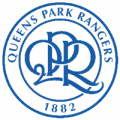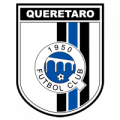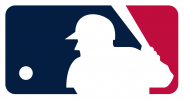Very few times in sports does a team go from a five-year stretch of dominance to a complete disaster. That's what happened to the Philadelphia Phillies. From 2007 to 2011, the Phillies won a World Series and were consistent favorites to make the playoffs. Now, they find themselves in complete shambles. Former manager Ryne Sandberg had enough; he resigned before the All-Star break. There are numerous reasons as to why the Phillies are where they are as a franchise. It's hard to point the finger at just one person even though general manager Ruben Amaro, Jr. gets the majority of the blame.
The Phillies have the worst record in baseball, and their roster shows for it. There are veterans three years past their primes mixed with young players who have yet to find their niche in the Big Leagues. Then there are Cole Hamels and Jonathan Papelbon, not to mention Maikel Franco. It's tough to fathom just how lackluster this baseball team is on a nightly basis. The average major league baseball team loses because either its hitting or pitching is off for any given game, but for the Phillies, they haven't been able to do anything right; and that extends to base running and fielding.
There will be games where their opposition will put up six or more runs, and the Phillies will counter with two or fewer. The worst game of the season came on June 16 when they lost to the Baltimore Orioles 19-3. The 2015 Phillies are on pace to have one of the worst records in franchise history, which dates back all the way to 1883. At this point, it wouldn't be surprising if the Phillies finish with only 50 wins; they are that horrid.
Let us start with the front office situation. Andy MacPhail was introduced on June 29 as the team's new president, succeeding Pat Gillick once the season ends. MacPhail is a breath of fresh air for the organization as he is the first team president hired outside of the organization. He will serve as Gillick's assistant for the rest of the season. With the turmoil that currently exists in the Phillies front office, MacPhail will be able to take full control once Gillick retires.
MacPhail's hiring could not have come at a better time, and, quite frankly, it should have happened earlier. In ESPN's "Great Analytics Rankings" back in February, where analysts ranked each organization in the four major sports based on the use of advanced statistics, metrics, and analytics, the Phillies ranked dead last at 122. So when MacPhail announced at his introductory press conference that the Phillies would start to hit the ground running in the sabermetrics world, there was a sigh of relief. It is 2015, and the Phillies have yet to look into metrics when building their roster and making decisions until the hiring of MacPhail. Let that sink in.

Gillick handed down the general managing keys to Amaro following the 2008 World Series victory, and while Gillick is given the credit for assembling the winning roster, the man who preceded Gillick, Ed Wade, drafted the key players of that team including Ryan Howard, Jimmy Rollins, Chase Utley, Hamels, Pat Burrell, and Brett Myers while also hiring manager Charlie Manuel. Gillick deserved credit for adding the proper pieces, but it was Wade who set the foundation. The point is, it's not surprising Gillick and Amaro are where they are as front office leaders. There have been several reports swirling that Amaro is the face for Gillick's decisions and that Amaro has been restricted with his ability to make moves. Those reports, of course, have been vehemently denied, but anyone can see the truth to those reports when factoring in the turmoil that is the Phillies front office.
When it comes to the front office, there is no surprise the disaster has trickled down to the on-field performance. At 28-56, the Phillies are far and away the worst team in Major League Baseball with a -133 run differential and an abysmal 10-31 record on the road. The Phillies currently rank 29th in runs, 29th in home runs, 22nd in batting average, 28th in on-base percentage, and 28th in slugging percentage. It gets worse. Pitching wise, the Phillies rank 29th in ERA, 28th in quality starts, first in walks (not a good stat to lead), and 29th in opponents' batting average.
The stats tell the story, but there's more to the eye-opening numbers. Looking at the Phillies roster, it's hard not to laugh. In the starting rotation, they have one pitcher who belongs on a Major League roster in Cole Hamels, and in the bullpen, every pitcher has either been inconsistent or shuffled between the big leagues and Triple A, with the exception of Papelbon.
There has not been one steady starting lineup for the Phillies at any point throughout the season. Chase Utley's struggles has led to increased playing time for Cesar Hernandez. The starting outfield has seen various combinations of Ben Revere, Odubel Herrera, Jeff Francoeur, Cody Asche, Domonic Brown, and even Darin Ruf, who has also platooned with Ryan Howard at first base. To sum it up, consistency is something the Phillies have lacked in all facets.
The All-Star break is right around the corner, which doesn't pertain to the Phillies like it once did; they will have their one representative. But the All-Star break represents another MLB event that will pertain to the Phillies (hopefully). That event is the trade deadline. Amaro and the Phillies' front office have no choice but to blow this team up, even if it means eating money and getting little to nothing in return for guys not named Cole Hamels or Jonathan Papelbon.
Howard is still under contract thru 2017, Ruiz's contract expires in 2017, and Utley has up to three years of vesting options thru 2018. However, with his performance this season and current stint on the disabled list, he isn't likely to qualify for his 2016 vesting option. Out of those three, Howard has the most value at this point in time, but possible American League suitors have made it clear that the Phillies would have to eat a substantial sum of Howard's remaining salary.
Last season, Utley had the most value. However, the six-time All Star's career has hit rock bottom, and it's likely Utley will play out whatever he has left in the tank with the Phillies. Revere's name has been tossed around as a potential trade piece -- in particular for the Seattle Mariners. Come July 31, it is very possible that Hamels, Papelbon, Howard, and Revere are all playing for different ball clubs.
The game the Phillies have been playing with Hamels over the past two years, in which they claim they don't "have" to trade Hamels at the deadline, is over. Hamels needs to go in order for the rebuilding process the Phillies are about to enter to last less than a decade. There is a glimmer of hope in the farm system with top prospects such as Aaron Nola, J.P. Crawford, Roman Quinn, and Zach Eflin dominating in the Minors. When a larger scope is used to look at the Phillies roster, though, anyone can identify that there is still a steep hill to climb in order for this team to have any hope.
The 2015 Phillies have seen a manager resignation, a sea of empty blue seats at Citizens Bank Park whenever they play home, and the waving of the white towel when the bullpen phone was not connected to the hook. Change is coming in Philadelphia. The only problem is that the change is coming two years too late.










































